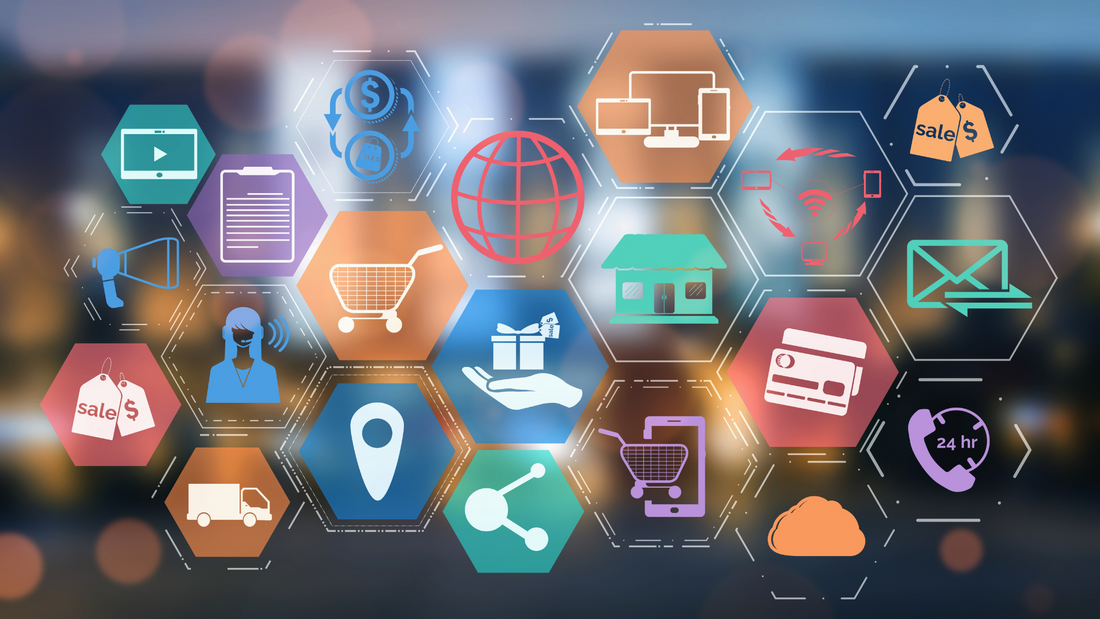
Eight Hard Truths Shaping Omnichannel in 2026
Share
Omnichannel retail in 2026 is operating in a pressure cooker. Shoppers expect the same speed and polish whether they’re in a store, on a website, or using a mobile app. Supply chains are leaner, competition is fiercer, and the economic backdrop leaves little room for error. Technology is racing ahead (AI promising instant insights, retail media networks promising fresh profits) but tools alone don’t guarantee success.
Layer on top the global headwinds: tariffs that raise costs overnight, conflicts that reroute shipping lanes, and climate shocks that test supply chain resilience. Retailers can’t control geopolitics, but they can control how their systems respond. The companies that thrive will be those that build shock absorbers into their operations, where AI, retail media, logistics, UX, and human oversight work in concert to absorb volatility and still deliver for the customer.
In 2026, the real advantage lies not in chasing the latest acronym but in orchestrating across them: AI to predict and automate, RMNs to generate profit and inform merchandising, CX to win loyalty at every touchpoint, and CPRA-style regulation to define the guardrails. The truth is simple but uncomfortable: omnichannel resilience now depends on integration. Any weak link (returns, last mile, inventory, UX) echoes across the entire customer journey.
Here are eight hard truths shaping omnichannel this year:
1. Returns Are a Loyalty Tax You Can Design Down
Returns have quietly become one of the costliest, and most emotional, elements of retail. According to the National Retail Federation, U.S. retailers lost nearly $890 billion to returns in 2024, equivalent to 17% of total retail sales. That number alone should reframe returns as a core strategic issue. Yet the bigger story is consumer perception: a painful return erodes loyalty, while a smooth one can deepen trust and encourage repurchase.
Retailers that treat returns as a designed experience, not a financial afterthought, are finding upside. Features like instant credit, easy scheduling, and personalized sizing guidance turn a moment of friction into a loyalty loop.
Example: Zara’s app-enabled return flow lets customers schedule pickups and access immediate store credit, encouraging them to shop again while still in the return process.
2. Retail Media Becomes Core P&L, Not Side Hustle
What started as a margin booster has become a business pillar. Retail media networks (RMNs) are projected to hit $140 billion in ad revenue by 2026 (Bain & Company), making them one of the fastest-growing profit engines in retail. But with growth comes scrutiny: advertisers now demand closed-loop attribution, transparency, and direct links between ad spend and product movement.
The implications are profound. RMNs are no longer just an “ad sales” function; they are increasingly woven into merchandising, pricing, and supply chain decisions. Retailers that fail to integrate retail media insights into the broader business will see the opportunity pass them by.
Example: Walmart Connect has raised the bar by integrating campaign performance with in-store and e-commerce sales data, demonstrating measurable lift and reshaping how brands negotiate shelf space and promotional investment.
3. Inventory Trust Beats Pretty Personalization
For years, retailers invested heavily in personalization engines to tailor offers and experiences. But in 2026, consumers have made their priorities clear: personalization is nice, availability is non-negotiable. Stockouts don’t just frustrate customers; they directly drive defection. Deloitte notes that as many as 40% of shoppers will switch retailers after a single poor availability experience.
This is why predictive inventory and demand sensing, powered by AI, have become the new battleground. Accurate inventory isn’t just an operational metric, it’s the personalization consumers actually feel.
Example: Target’s predictive inventory investments have reduced out-of-stock rates while lifting loyalty scores, proving that “it was there” resonates more than “it was personalized.”
4. Agentic AI Moves From Demos to Ops
AI’s first wave in retail focused on forecasting and recommendation engines. The next wave is agentic AI: systems that don’t just suggest, but act. These agents can reorder stock, propose substitutions in real time, or assign fulfillment tasks to associates. They’re not replacing humans but working alongside them, closing gaps where speed is critical.
The shift matters because execution at the edge (on the warehouse floor, in last-mile routing, in substitution decisions) can no longer wait for manual oversight. Retailers that harness agentic AI with human guardrails gain agility competitors can’t match.
Example: A grocery chain piloting AI-powered substitution agents reported a 15% increase in acceptance rates, because the system could balance price, freshness, and dietary needs in seconds, something manual processes rarely achieved.
5. Privacy Regulation Will Redraw CX and Measurement
The privacy landscape is no longer an abstract compliance exercise. The California Privacy Rights Act (CPRA), now including rules on automated decision-making technology (ADMT), requires businesses to provide transparency, risk assessments, and opt-outs around algorithmic decisions. Other states are likely to follow, and global regulators are setting similar precedents.
This means that CX design itself must account for privacy. Clunky consent flows or opaque personalization erode trust; clear, transparent explanations can build it. Privacy is now part of the customer journey, not a legal footnote.
Example: Apple’s App Tracking Transparency framework, despite limiting ad targeting, boosted consumer trust in the Apple ecosystem—proving that clarity and choice can be a competitive advantage.
6. Shifts in the Adtech Landscape
The adtech ground is shifting. The European Union’s €3 billion fine against Google’s adtech stack in 2025 highlighted structural issues in digital advertising. At the same time, the demise of third-party cookies and the rise of “clean rooms” have fractured attribution models. Retailers relying on a single platform’s measurement face growing blind spots.
The smart play is diversification: blending first-party data, retail media insights, and independent verification to triangulate performance. Omnichannel attribution may be shakier in the short term, but building redundancy now will prevent disruption later.
Example: Carrefour’s partnership with The Trade Desk created a transparent measurement ecosystem outside of Google’s walled garden, offering brands more reliable cross-channel performance data.
7. Last-Mile Orchestration Outruns One-Off Automation
Automation is valuable, but the real differentiator in last-mile delivery is orchestration—coordinating every piece of the experience from slotting to communication. Dynamic delivery windows, real-time ETA updates, proactive notifications, and clear escalation paths all matter as much as speed.
Customers now expect visibility and flexibility. A package that arrives late with no explanation damages trust more than a longer but transparent delivery window. Orchestration is about designing reliability into every step of the journey.
Example: Domino’s “Pizza Tracker” set a cultural benchmark for delivery transparency. Grocery and parcel players have scrambled to replicate it, but few match the clarity of communication that consumers now see as table stakes.
8. UX Debt Cancels Out Great Logistics
All the AI, automation, and logistics prowess in the world can be undone by poor user experience. Forrester’s 2025 U.S. Customer Experience Index found many brands flat or declining in CX, despite back-end investment. The message is blunt: customers don’t care about operational heroics if the interface is confusing or stressful.
Retailers need to treat UX like revenue infrastructure. Checkout flows, substitution options, tipping clarity, and delivery notifications aren’t minor details—they’re the screens that decide loyalty.
Example: Instacart’s revamp of its checkout and substitution flows directly correlated with higher NPS and repeat orders, proving that UX upgrades pay off as much as logistics ones.
Closing Thought
Omnichannel in 2026 is about interdependence. Returns, retail media, inventory, AI, privacy, adtech, logistics, UX, each is a lever, but none can stand alone. The leaders will be those who design for integration, where every part of the system reinforces the others.
Because in this environment, a missed beat anywhere (whether a clunky consent flow, a stockout, or a failed notification) echoes across the entire customer journey. And when everything works together? The result isn’t just efficiency. It’s resilience, loyalty, and growth.
Sources
- National Retail Federation, Retail Returns Report 2025 – $890B lost to returns
- Bain & Company, Retail Media Forecast 2026
- Forbes, “How AI Is Reshaping the Supply Chain” (Feb 2025)
- ShipEdge, 11 AI E-Commerce Logistics Processes (2025)
- California Privacy Protection Agency, CPRA/ADMT Regulations (2025)
- Tech Crunch, “EU Fines Google €3B Over Adtech Abuse” (2025)
- Forbes Tech Council, “AI in the Supply Chain: Challenges, Solutions, Applications” (2025)
- Forrester, US Customer Experience Index 2025
